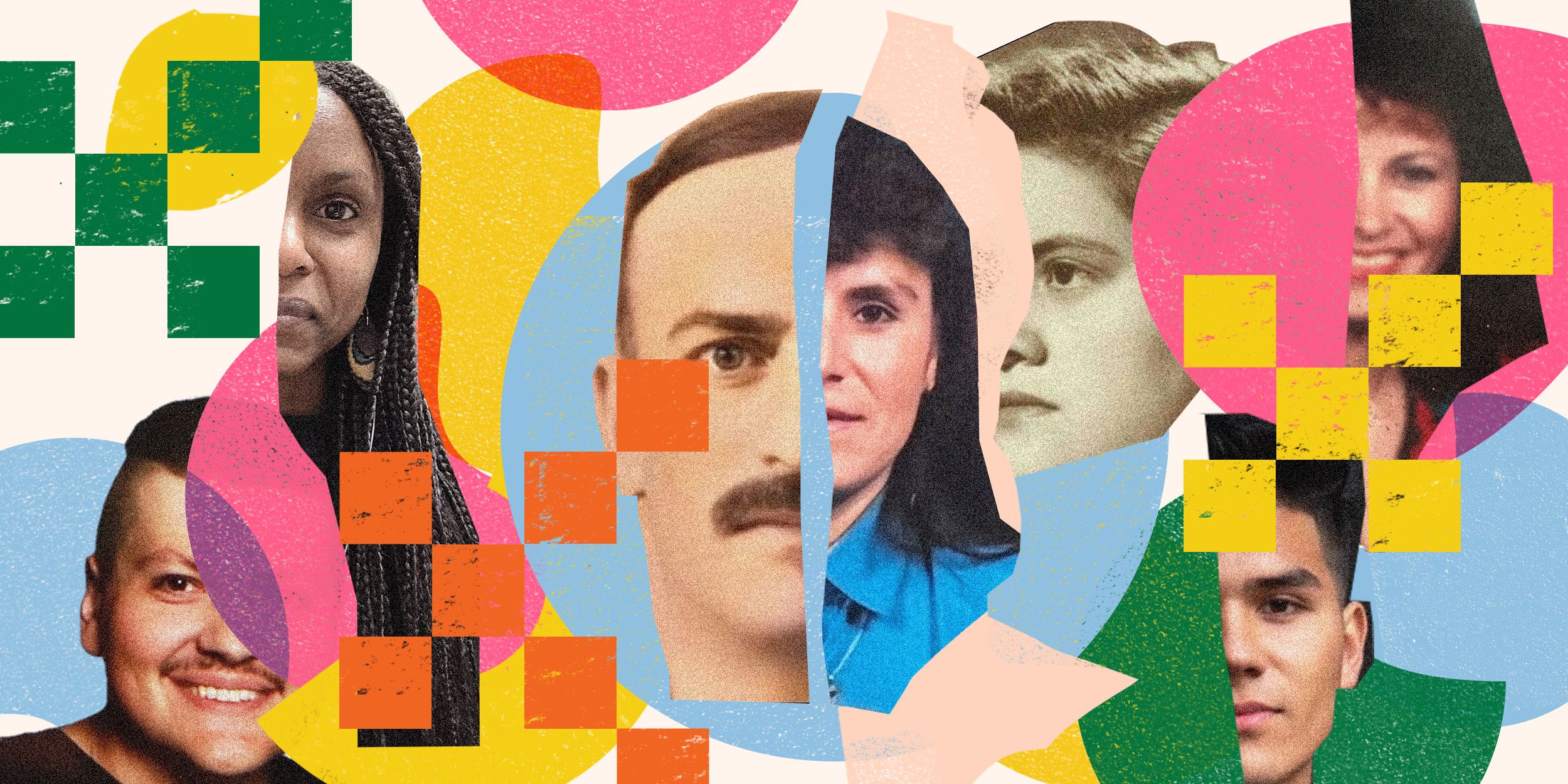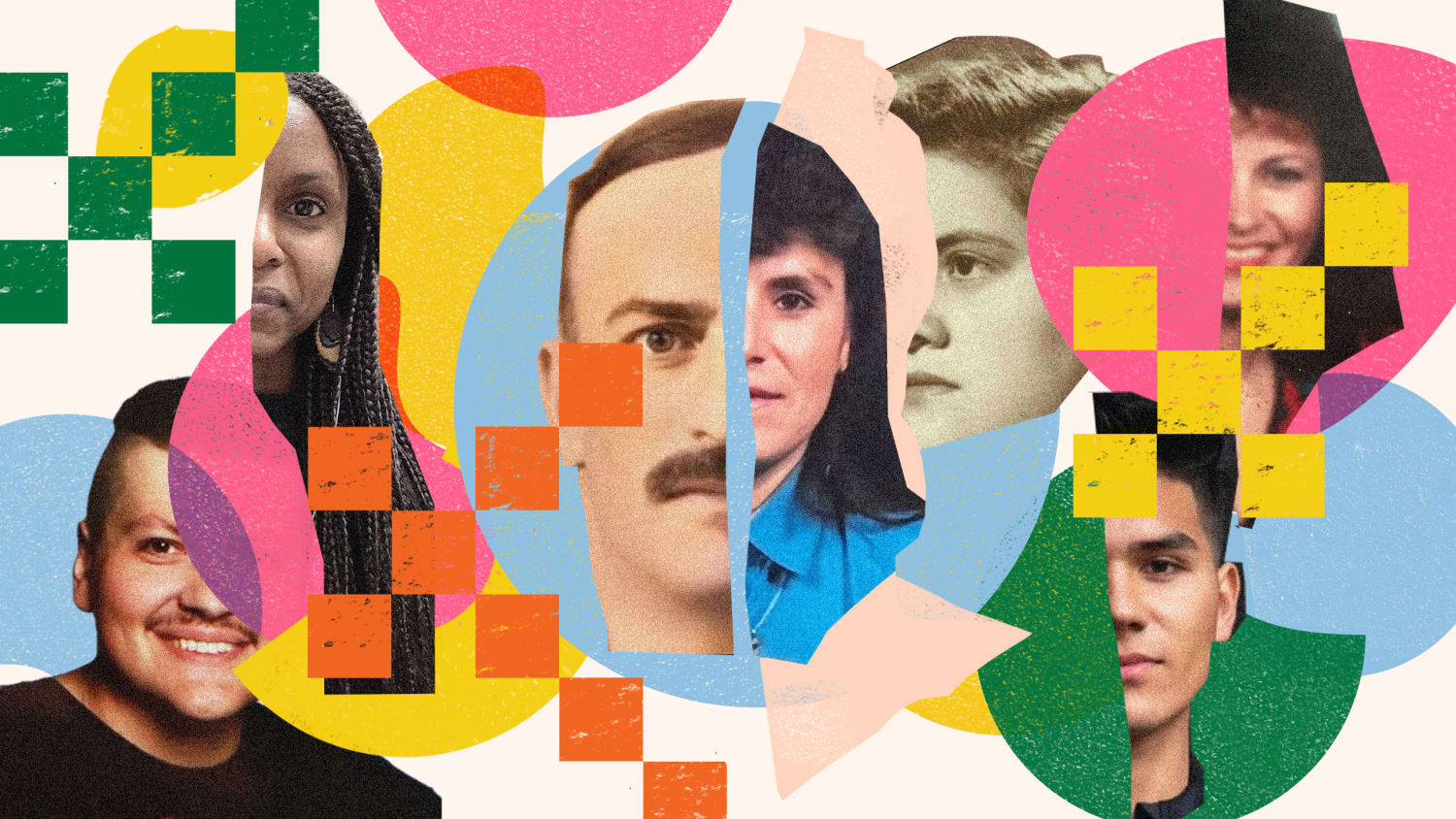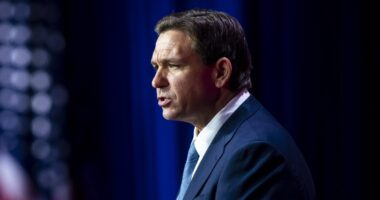
In immigrant families, growing up next to the ‘americanos’
José Moya Hajje, 69, a Barnard College historian, had paternal great grandparents who hailed from Spain, one of whom married a Black Cuban, and maternal grandparents who were of Lebanese descent. Cuba attracted many Lebanese merchants during the 1910s, Moya said.
After Fidel Castro took power in Cuba, Moya was sent away by his family, like thousands of other young boys before they reached 15, Cuba’s military age. After a brief stint in Spain, Moya Hajjer reunited with his family in New Jersey in 1969.
Moya with a chocolate “Cuba” cigar in Norway.
Moya with a chocolate “Cuba” cigar in Norway.
“We had a sense of gratitude towards a country that hosted us,” he said about the U.S. But still, “I think of myself as Cuban, really. … That is the place where I was born.”
For Colombian American Christian León, 48, growing up in his Spanish-speaking household in Tampa, Florida, was a big reason he never really identified as “American” and didn’t embrace his bicultural upbringing until adulthood — even though he was born in the U.S.
He recalled that his friends came to know his place as the dancing and music house, because his parents, doctors who emigrated from Colombia, were “rumberos” who hosted big parties.
Christian León grew up in Florida in a Spanish-speaking household.
Christian León grew up in Florida in a Spanish-speaking household.
“It was very Latino and very Caleño,” León said, referring to the city of Cali, his parents’ birthplace.
For Latinos who are proficient in Spanish, knowing the language has been a way to build community.
Vilma Habibah, 52, whose last name was Santos, was born and raised in Puerto Rico. When she started practicing the Muslim religion 25 years ago in New York, she was “one of the few Hispanic Muslim women in Long Island, and I felt super alone,” she said. Now she’s part of a growing community — and she uses her native language to host “Construyendo Puentes de Paz,” (“Building Bridges of Peace”), a Spanish-language show on America’s Islamic Radio.
Habibah in Old San Juan, Puerto Rico; in Albonito, Puerto Rico, in 1978; and in Mecca in 2022.
Habibah in Old San Juan, Puerto Rico; in Albonito, Puerto Rico, in 1978; and in Mecca in 2022.
In 2017, an estimated 276,000 Muslims in the U.S. — roughly 8% of the country’s Muslim population — were of Hispanic descent, up from 6% in 2011, according to the Pew Research Center.
While 88% of Hispanic adults say it’s important for future generations to speak Spanish, later generations are less likely to speak it.
In Wilson, North Carolina, the 10 Herrera siblings grew up in a traditional Mexican household with immigrant parents who mainly spoke Spanish. Markedly more English is spoken in their home now, said Alberto, the seventh-born, compared to when Flor, the eldest, was born in 1990.
Alberto Herrera and his grandparents, Frajedis Juarez and Sarah Villanueva de Juarez.
Alberto Herrera and his grandparents, Frajedis Juarez and Sarah Villanueva de Juarez.
Alberto, 19, said his youngest siblings, ages 15 and 13, grew up with technology and video games that have “inherently made them more connected to the American side.” Alberto said he embraced the value of his Spanish skills at a construction internship where he was the only person who could communicate with the Spanish-speaking subcontractors.
Flor, 32, chose to own her identity after she turned 18 and was looking to legally change her middle name, Josefina, which she had always hated — until she asked her parents about it.
When her parents made the trek from Mexico to the U.S. border, her mom, then pregnant with Flor, became extremely dehydrated and thought she wasn’t going to make it. She prayed to San José ( St. Joseph) that if she survived, she’d name her child after him — hence Josefina. Flor kept her middle name.
Alejandro and Irma Herrera with Flor and Alex.
Alejandro and Irma Herrera with Flor and Alex.
Flor and her sister Elizabeth run Casa Azul, a nonprofit organization in their hometown, focusing on helping first-generation college students and promoting Latino culture.
“Because of my American existence, I know I’m not white,” Flor said. “I know I’m not Black. But I’m Latina.”
Does white erase Latino?
An estimated 5 million American adults with Hispanic ancestry, or 11%, said they don’t identify as Hispanic or Latino, according to the Pew Research Center.
Growing up in Speegleville, Texas, a mostly white community, Matthew Swindall marked “white” when he was asked about his race or ethnicity at school, he remembers. He felt nobody would believe him if he said he was Hispanic, even though his mother, whose maiden name is Mendoza, is Mexican American.
“Everyone sees my last name, that’s the whitest name you can have!” Swindall, 39, a red-haired, fair-complexioned police officer, said between laughs.
Matthew Swindall and his grandmother, Sofia Mendoza.
Matthew Swindall and his grandmother, Sofia Mendoza.
He fondly remembers attending family reunions in South Texas where his great-grandmother understood English but wouldn’t speak it. His mother translated but never taught him Spanish, because, as she told him, “I honestly didn’t think you’d ever need it,” Swindall said.
Now married to a Mexican American woman and with two children, “I want my kids to know they’re both” white and Hispanic, he said.
Elizabeth Méndez Berry, a vice president and executive editor of an imprint at Random House, describes herself as the daughter of a brown Colombian woman and an “incandescently white” Irish Canadian man.
Elizabeth Méndez Berry with her parents and her Canadian grandparents in Toronto, left; Méndez Berry, third from left, with cousins in Cali, Colombia, around 2010.
Elizabeth Méndez Berry with her parents and her Canadian grandparents in Toronto, left; Méndez Berry, third from left, with cousins in Cali, Colombia, around 2010.
She has been working on a book about a formerly incarcerated man who has a common Latino last name. But in every record she found of him, he was categorized as white. “I don’t think we are being counted well at this point,” she said.
Méndez Berry feels “very close” to her Latino identity, but she said it’s important for light-skinned Latinos like her “to acknowledge our whiteness and our privilege.”
Mirabella Isais, 22, who’s Mexican and Russian, found herself distancing herself from her Latino roots as she navigated middle school in West Covina, California, blending in with other lighter-skinned kids so she wouldn’t have to deal with the bullying she saw other Latino students face.
“I was very scared,” Isais said. “I would almost try to hide it and pretend like it wasn’t there.”
It wasn’t until college, as she got closer to her half-Salvadoran and half-Mexican best friend, that Isais felt more comfortable owning her Latino side. “It’s the first thing that I say when people talk to me. I’m half Russian, half Mexican. It’s so important to me.”
Making room for ‘Chicano’; acknowledging Spain
Abel Chávez, 43, the first Latino president of Our Lady of the Lake University, a Hispanic-serving institution in San Antonio, said he’s Spanish, French and German from his father’s side and Tarahumara, an Indigenous people from Mexico, from his maternal grandfather.
He identifies as Chicano and marks that on census forms. It’s an identity reflected in his passion for lowrider cars, which his father showed him how to build — and which inspired Chávez’s eventual career as a mechanical engineer.
Abel Chávez, first Latino president of Our Lady of the Lake University, on the campus in San Antonio, Texas. (Courtesy of Our Lady of the Lake University)
Abel Chávez, first Latino president of Our Lady of the Lake University, on the campus in San Antonio, Texas. (Courtesy of Our Lady of the Lake University)
On the race question, he also checks off “white,” a nod to his family nickname, “El Güero,” a reference to his light skin. Nonetheless, Chávez solidly proclaimed, “I have no doubt that I am mestizo.” The complexity of his identity allows him to be an academic executive and a lowrider fanatic, he said. “You are one and you are the other,” he said.
On the other hand, Cindy Medina, 47,-a genealogist from Texas, feels more comfortable embracing her European roots, which she attributes to her father’s lineage.
She manages the New Spain and Mexico Facebook page, where she posts about Spanish, Mexican and Indigenous history.
Medina’s great-great grandparents, Miguel and Pilar Vidal from Chihuahua City; Medina in El Paso, Texas; and five generations of women in Medina’s family in the late 1970s.
Medina’s great-great grandparents, Miguel and Pilar Vidal from Chihuahua City; Medina in El Paso, Texas; and five generations of women in Medina’s family in the late 1970s.
Medina is of Mexican descent, but she’s more likely to promote her Spanish heritage when she’s speaking to “Anglos,” she said.
“With white people, I push it. They think they are European. Well, I’m European and have been for longer,” she said, explaining the history of the Spanish colonial settlers who inhabited a wide swath of what is now the U.S. Southwest and West. Medina’s efforts have at times put her at odds with relatives who identify as Chicano, she said.
“As Mexican Americans, as Spanish Americans, we must understand each other. We are the ones with the history,” Medina said. “I’m not going to let someone else tell me otherwise.”
Source: | This article originally belongs to Nbcnews.com










